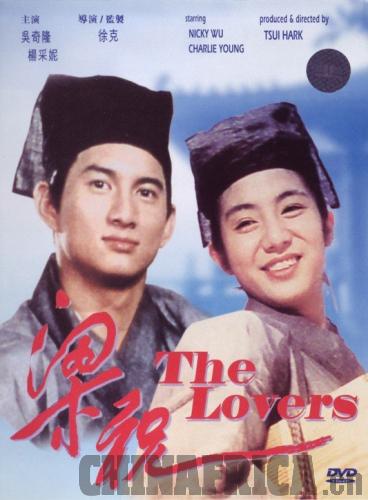| 
Love has always been a major theme in literature. Each nation has its unique classic love stories. The Chinese versions include the legend of Liang Shanbo and Zhu Yingtai, also known as The Butterfly Lovers, and the love story of Jia Baoyu and Lin Daiyu in A Dream of Red Mansions. These characters have to this day left an indelible imprint on the minds and lives of Chinese people.
Butterfly Lovers
Regarded as the Chinese equivalent of Romeo and Juliet, the legend of Liang and Zhu stands as a literary masterpiece that has enjoyed much popularity among Chinese people for hundreds of years due to a riveting plot, vivid character descriptions, a theme that encourages people to seek knowledge, and believe in love and respect for life.
The romance is set in the Eastern Jin Dynasty over 1,600 years ago. Then, Chinese traditions discouraged females from going to school. However, Zhu, a beautiful and intelligent young woman, was so thirsty for knowledge that she disguised herself as a man to attend class where Liang studied. After studying for three years with Liang, she fell in love with him.
Zhu returned home first. And later Liang visited her family only to discover she was a woman. He proposed marriage to her. However, Zhu's family betrothed her to another family. When he heard the news, Liang was heartbroken. His health deteriorated because of his lovesickness. And finally he died.
On the day of Zhu's marriage one year later, a strong wind prevented the wedding procession from escorting the bride beyond Liang's grave. Zhu left the procession to pay her respects to Liang in front of the grave, which opened with a clap of thunder. Without any hesitation, Zhu threw herself into the grave. Their spirits transformed into butterflies that flew wing to wing in the sky. They were never separated again.
Despite a tragedy, the story ends with the lovers joining together, extolling people's faith in true love and is also popular beyond China's borders in North Korea, Japan and Viet Nam, which have similar cultural traditions with China. During the process of transmission, the story inspired many artistic interpretations, including the Yue Opera (a local Chinese opera), the violin concerto and a film.
In memory of the beautiful love story, numerous gravestones, temples and buildings have been built across the country and the story remains as fresh today as it ever was.
A Dream of Red Mansions
Cao Xueqin (1715-64), the author of A Dream of Red Mansions, was born into a noble feudal family and led a luxurious life during his boyhood. Later on, he endured more impoverished circumstances. Based on his own understanding of life, he wrote A Dream of Red Mansions, which has been praised as an encyclopedia for better understanding Chinese feudal society and is considered one of China's four great classic novels. The novel has been adapted for drama, TV series and films.
The heart of the novel is a love story between Jia Baoyu and Lin Daiyu, two childhood playmates who later fall in love with each other. Their innocent relationship turns tragic with Lin dying of lovesickness after Jia marries someone else and Jia eventually becoming a monk. Their large feudal family is split apart after these events.
The story told in A Dream of Red Mansions, also known as The Story of the Stone, is legendary to some extent as in many other Chinese classic novels. Jia is the reincarnation of a stone, while Lin of a heavenly flower. According to legend, when creating the love story of Jia and Lin, Cao Xueqin was inspired by the phenomenon that a cedar grew in the crevice of a stone near his home. In his later years, Cao settled near Xishan Mountain in Beijing. Textual research has shown that Cao Xueqin Memorial Hall inside Beijing Botanic Gardens is the site where Cao lived and the venue features a daily exhibition and activities to popularize the folk legend for students and visitors. Located in a nearby hill, the cedar and the stone seem to be an integral whole. Locals believe they are the reincarnation of a couple that is unwilling to be separated in life or death.
There are many folk legends about Cao and A Dream of Red Mansions near Xishan Mountain in Beijing. For more than 200 years, legends were orally passed down from generation to generation by locals and became a source for people to learn more about the writer. |